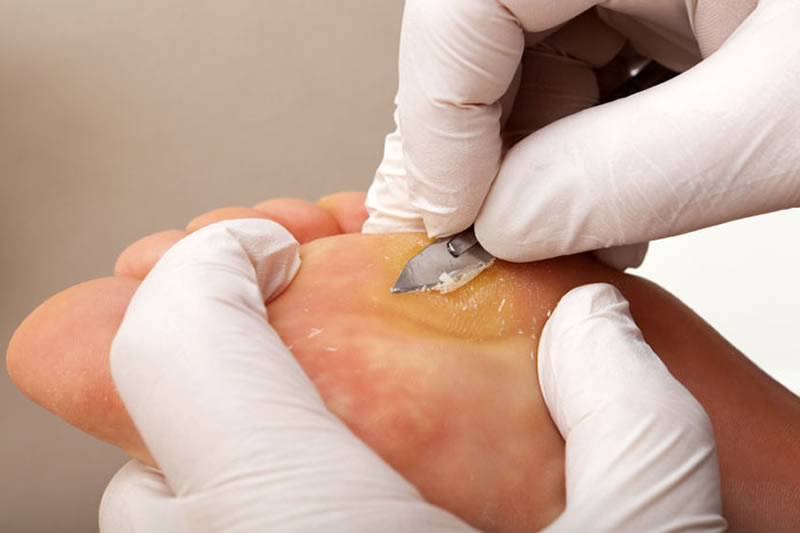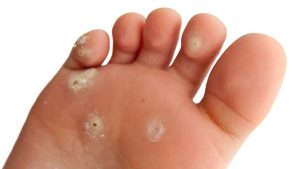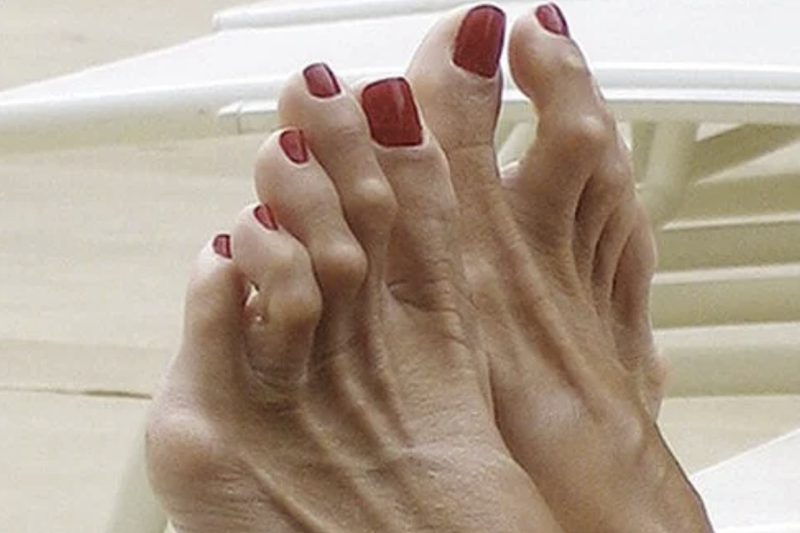
What Is a Plantar Wart?
A wart is a small growth on the skin that develops when the skin is infected by a virus. Warts can develop anywhere on the foot, but they typically appear on the bottom (plantar side) of the foot. Plantar warts most commonly occur in children, adolescents and the elderly. Warts are one of several soft tissue conditions of the foot that can be quite painful. They are caused by a virus and can appear anywhere on the skin. Those that appear on the sole of the foot are called plantar warts. Children, especially teenagers, tend to be more susceptible to warts than adults. Some people seem to be immune to warts.
There are two types of plantar warts:
- A solitary wart is a single wart. It often increases in size and may eventually multiply, forming additional satellite warts.
- Mosaic warts are a cluster of several small warts growing closely together in one area. Mosaic warts are more difficult to treat than solitary warts.
Causes
Plantar warts are caused by direct contact with the human papilloma virus (HPV). This is the same virus that causes warts on other areas of the body. The virus that causes warts generally invades the skin through small or invisible cuts and abrasions. The plantar wart is often contracted by walking barefoot on dirty surfaces or littered ground where the virus is lurking. The causative virus thrives in warm, moist environments, making infection a common occurrence in communal bathing facilities.
If left untreated, warts can grow to an inch or more in circumference and can spread into clusters of several warts; these are often called mosaic warts. Like any other infectious lesion, plantar warts are spread by touching, scratching, or even by contact with skin shed from another wart. The wart may also bleed, creating another route for spreading. Occasionally, warts can spontaneously disappear after a short time, and, just as frequently, they can recur in the same location.
Symptoms
Most warts are harmless, even though they may be painful. They are often mistaken for corns or calluses, which are layers of dead skin that build up to protect an area which is being continuously irritated. The wart, however, is a viral infection.
Plantar warts tend to be hard and flat, with a rough surface and well-defined boundaries; warts are generally raised and fleshier when they appear on the top of the foot or on the toes. Plantar warts are often gray or brown (but the color may vary), with a center that appears as one or more pinpoints of black. It is important to note that warts can be very resistant to treatment and have a tendency to reoccur.
When plantar warts develop on the weight-bearing areas of the foot (the ball of the foot, or the heel, for example), they can be the source of sharp, burning pain. Pain occurs when weight is brought to bear directly on the wart, although pressure on the side of a wart can create equally intense pain.
What to expect
Diagnosis & Treatment
To diagnose a plantar wart, the foot and ankle surgeon will examine the patient’s foot and look for signs and symptoms of a wart.
Although plantar warts may eventually clear up on their own, most patients desire faster relief. The goal of treatment is to completely remove the wart.
The foot and ankle surgeon may use topical or oral treatments, laser therapy, cryotherapy (freezing), acid treatments or surgery to remove the wart.
Regardless of the treatment approaches undertaken, it is important that the patient follow the surgeon’s instructions, including all home care and medication that has been prescribed, as well as follow-up visits with the surgeon. Warts may return, requiring further treatment.
If there is no response to treatment, further diagnostic evaluation may be necessary. In such cases, the surgeon can perform a biopsy to rule out other potential causes for the growth.
Although many folk remedies for warts exist, patients should be aware that these remain unproven and may be dangerous. Patients should never try to remove warts themselves. This can do more harm than good.
It is possible that your podiatric physician will prescribe and supervise your use of a wart-removal preparation. More likely, however, removal of warts by a simple surgical procedure, performed under local anesthetic, may be indicated.
Lasers have become a common and effective treatment. A procedure known as CO2 laser cautery is performed under local anesthesia in either your podiatrist’s office surgical setting or an outpatient surgery facility. The laser reduces post-treatment scarring and is a safe form for eliminating wart lesions.
Prevention
- Avoid walking barefoot
- Change shoes and socks daily
- Keep feet clean and dry
- Check children’s feet periodically
- Avoid direct contact with warts from other persons or from other parts of the body
- Do not ignore growths on, or changes in, your skin
- Visit your podiatric physician as part of your annual health checkup



